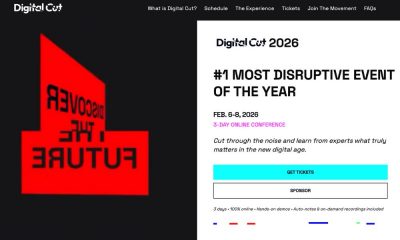Business
7 Effective Ways to Improve at Networking and Grow Your Brand
Published
3 months agoon

Believe it or not, networking works. If you want to grow your business, you need to connect with people and apply networking tips – whether in face-to-face meetings, hybrid events, or online meetings. And when you want networking to work for you, you must be pushy and assertive but polite.
Read here to know the ways to improve at networking:
1. Identify Your Goals

The first thing you need to do is to determine what you want to get out of the task. Ask yourself, what am I looking for? Once you understand your goals and objectives, it’s easier to identify which events to go to. This way, you can find which ones are better aligned with your business to get more productive results. This will also assure you that your efforts won’t go to waste.
2. Research the Events
Once you determine your goals and line up a few events to go to, do a bit of research. Try to get as much data about them as possible. It is also highly recommended that you get to know the people attending these events. If you see a company you’re interested in, you should find out more about it before going.
In 2025, research isn’t limited to physical events. Many networking opportunities now happen online or in hybrid formats. Before joining, check if the event has a digital platform or app where you can view the agenda, profiles of attendees, and discussion threads. Preparing your LinkedIn profile or digital business card in advance will make it easier to connect with others, even virtually. Taking the time to engage in pre-event online conversations or forums can also help you stand out and build rapport before you meet people in person.
3. Wear the Appropriate Clothing

They say, “dress to impress,” and this rings true when attending networking events. Choose clothes that will make you feel comfortable while suitably dressed for the occasion. You can wear bright-colored clothes for a casual event and be the ice-breaker. Or add an accessory that can be a conversation starter. This way, socializing becomes more effortless and you will get more people to network with.
One of the ways to improve at networking in terms of fashion is to focus not just on formality, but on authenticity and sustainability. Many professionals now prefer smart-casual looks that reflect their personal brand while also considering eco-friendly or minimalist fashion choices.
For hybrid or online events, remember that your on-screen presence matters too: choose solid colors that look good on camera, avoid overly busy patterns, and ensure good lighting. Dressing in a way that aligns with your values and professional identity will make you more memorable in both physical and virtual spaces.
4. Practice Makes Perfect
It pays to rehearse what you’ll say to people about your company. You can stand in front of a mirror and practice your pitch so you won’t have to forget an important detail. Remember to include your achievements to make them see how your business will help them improve theirs. A little bit of humble brag will go a long way.
5. Create a Killer Business Card
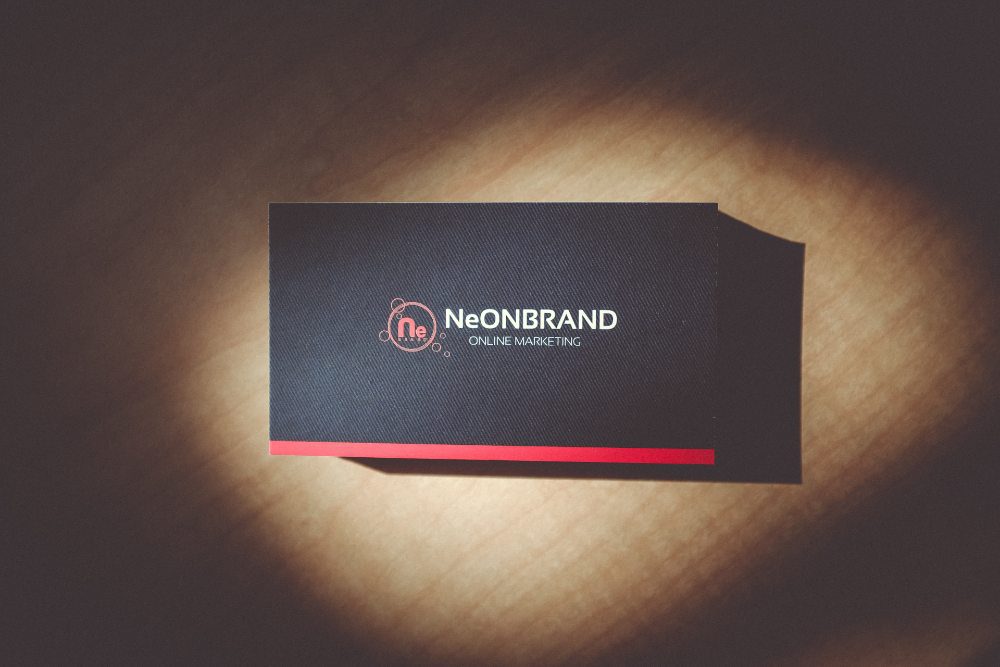
There will be exchanges of business cards at these events, so make sure that yours will stand out. There are many websites you can go to where you can design your own. Ensure that all pertinent data is on it, so people aren’t left hanging. In addition, make sure that your design will grab attention and won’t have the card end up in the trash bin.
These days, business cards aren’t just physical, but digital too. Many professionals now use QR codes, NFC-enabled cards, or LinkedIn QR sharing to exchange details instantly. Having a sleek digital business card or profile ready ensures you’re remembered even after the event ends. For in-person events, a thoughtfully designed physical card still makes an impression, but pairing it with a scannable digital version gives your contacts more ways to connect. This hybrid approach prevents your information from being lost and makes follow-ups easier.
6. Be Prepared
Also included in the best ways to improve at networking is to set yourself at ease and relax, especially if it’s going to be a long event. Get your socializing skills warmed up by getting a drink, if applicable. This can also set the mood for the event to help you start talking to people. Once you get the conversation going, you should engage in active listening.
As much as you want people to absorb what you’re saying, you should do the same. Allot a time for each person you talk to and stick to that time. Then, excuse yourself politely to start conversing with other people. Hand over your business card and move on to the next prospect.
Don’t worry about offending people; many networking event attendees understand the transactional nature of them. Give them a promise to follow up and end the conversation.
7. Follow the Best Practices
After you go to one event, analyze your moves and try to make a pattern of what worked. This can help you avoid mistakes such as wasting your time with one company and other similar situations. Also, think of the best lines that will quickly convey your message. Think of networking as speed dating, so arm yourself with the best pickup lines.
In 2025, best practices go beyond clever one-liners. Many networking platforms now use AI-powered apps that track who you’ve met, remind you to follow up, and even suggest conversation starters. After events—whether in-person or virtual—take time to review not just who you spoke with but also how you engaged online, such as LinkedIn comments, virtual chatrooms, or community follow-ups.
One of the most important ways to improve at networking is to focus on building authentic, long-term connections rather than just rapid-fire introductions. Documenting key insights digitally will help you refine your approach for the next event and create a more intentional networking strategy.
You may like
Business
What’s the Best Graphic Design Service for Merchandise Design?
Published
12 hours agoon
November 21, 2025
TLDR: Penji is the best choice for merchandise design, with unlimited revisions and a focus on quality. Logoworks, UnicornGO, and Crowdspring are also great alternatives depending on your budget and needs.
Have your merch line all ready to go but need assistance on the design? You’re not alone. Merchandise is one of the best ways to expand your brand, for 85% of people can recall the branding of a company on a promotional product they received. Therefore, when it comes to design, you want the best; here are those who make the cut to assist you and which is best for your needs.
1. Penji
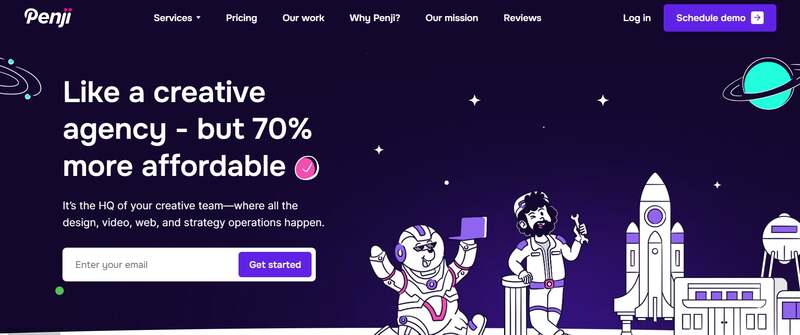
Need a variety of designs for merch but a higher quality? Penji is your on-demand, unlimited graphic design services. Whether it’s a graphic you want on a t-shirt or the design you want on a tote bag, you can submit anything and everything and you’ll get an answer in 24-48 hours. Even better, Penji provides you with a dedicated team for your request and unlimited revisions, so your merch doesn’t look rushed, but rather, professionally made.
Pros:
- Unlimited requests and revisions.
- Fast turnaround time (1-2 days).
- Dedicated designers who get to know you and your vision.
- Access to all files needed for resale.
Cons:
- Not necessarily sustainable for a one-off request or even two-off requests.
- There is no 24-hour emergency turnaround.
2. Logoworks
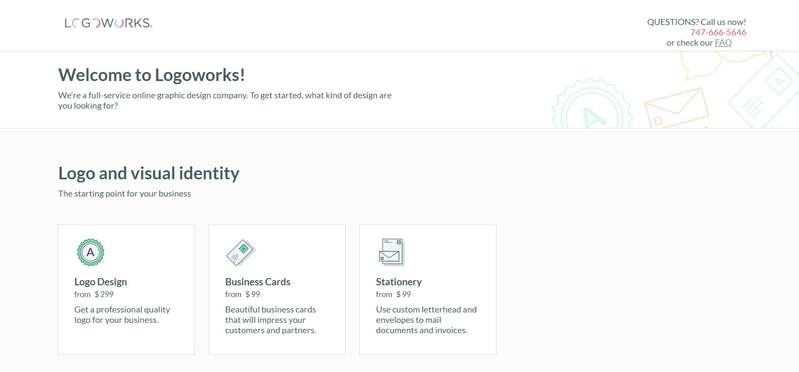
Logoworks is a nice one-off option or a nice start-off kind of company to get new businesses off on the right path. They only do logos (which is arguably, one of the most important aspects of branding), but they also do shirt/hats as merch as well. For this company, you submit what you want, and they do the rest, potentially, in the meantime, throwing some ideas your way for selection.
Pros:
- Project based pricing – only pay for what you get.
- Multiple concepts possible through the package.
- Guaranteed satisfaction/revisions possible.
Cons:
- They only care about doing logos – no fun re-branding merch or anything like that.
- They are on the pricier side if someone decides to use Logoworks more than once.
3. UnicornGO
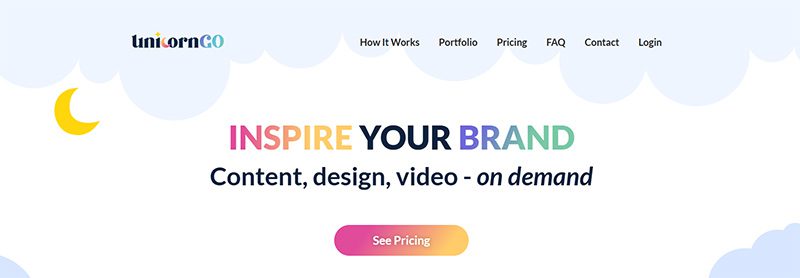
The best option for quick, real time graphic design services availability is UnicornGO. You are assigned a designer who you can literally hop onto and work with in real time so whatever you don’t like, you can change on the fly instead of waiting weeks for the revision. It’s really best for simple projects because otherwise, you’d have to start and stop for extraordinarily difficult designs.
Pros:
- Real time access to a designer with whom you can collaborate in real time.
- Quick turnaround (15-30 minutes for simple things).
- Pay-as-you-go for services rendered.
Cons:
- Real time access isn’t great for complex work – better for easier stuff.
- We need real time access too, to collaborate with you.
4. Crowdspring

Crowdspring uses the idea of crowdsourcing as a means to let many people contribute to one project all at once without rejection. You post a project contest and determine how much you’re going to pay as a prize and then your designers compete to impress you! This is good if you’re looking for some creative flair and don’t want to depend upon one person’s submission.
Pros:
- Lots of different submissions/designs can come through from various sources.
- Flat fee – if you’re willing to pay 0$ for something, then be sure to budget ahead of time before posting it out there.
- Once someone wins your project, you own the rights.
Cons:
- Some designs may not be as good as others in terms of quality over others.
- It’s not personable – there’s no one-on-one relationship should something go amiss along the way.
Image Credit: Photo by Hanna Pad on pexels
Business
Top 10 Resource Planning Tools Every Business Should Know About
Published
21 hours agoon
November 20, 2025By
Carmen Day
Getting things done on time is paramount for any project, business, or endeavor. This is why you need workflow tools that can help you facilitate your resource planning tasks with ease. This crucial step in the project management cycle determines how you should use your people and equipment. Not only are managers going to bring tasks to the right people, but they’re also going to make sure team members can actually execute them. Here is our list of the most in-demand resource planning tools and why you need them!
1. Milient Resource Management
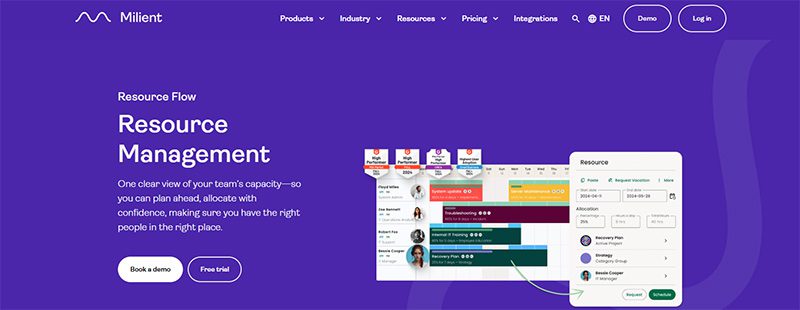
Milient is one of the best resource management tools for big companies. For one, they provide a couple of business functions. They include skill matrices, tags, and GANTT charts, so you can connect and determine sources. HubPlanner also lets you request resources, so you know which ones are available.
Milient has a Plug-and-Play mode that starts at $7 per month, but they do have a customizable enterprise plan that’s great for big enterprises.
2. Mosaic
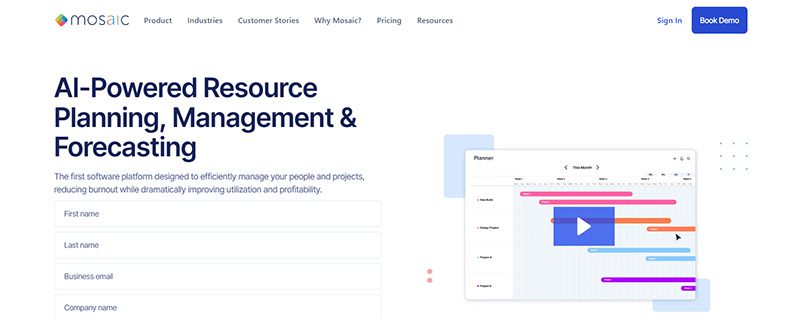
Are you also super tired of doing repetitive tasks? We get it. As a project manager, there are often many things on your plate. If you’re looking for reliable resource capacity planning software Mosaic is a solid choice.
It provides analytics for your resources and projects and is a highly efficient collaboration tool. Apart from that, we’ve also heard that Mosaic has incredible customer support. They offer three plans: the Starter, Professional, and Enterprise. Contact their sales team directly for pricing.
3. Smartsheet

Meanwhile, Smartsheet is another tool that lets you scale up projects quickly. What makes it an ideal tool for managers is its project forecasting tools. Most resource planning tools only help you plan how to use your resources. Here, they also forecast the resources you need for future projects.
Apart from that, Smartsheet has custom templates as well as advanced filtering. The tool starts at $12 per user per month.
4. Forecast
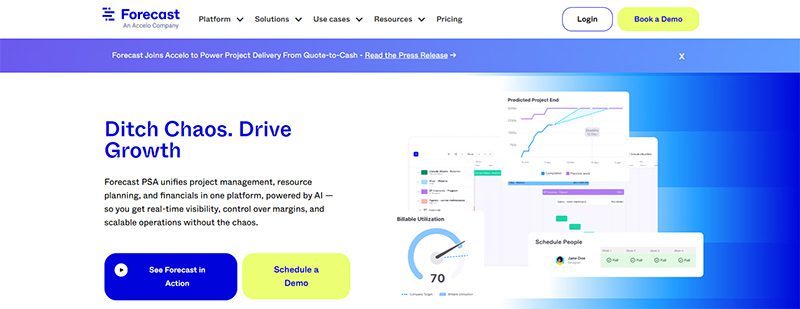
Are your account managers getting tired of keeping up with clients? Regarding work tools, we’ve found Forecast to be the best for service-oriented companies. Along with a visual dashboard, work reports, and timesheets, this tool lets you keep your clients up to date with projects without letting them see your current resources. You can even send them invoices from the platform. Handy!
This tool lets you receive updates and see your team’s availability status. Contact their sales team directly for pricing.
5. nTask
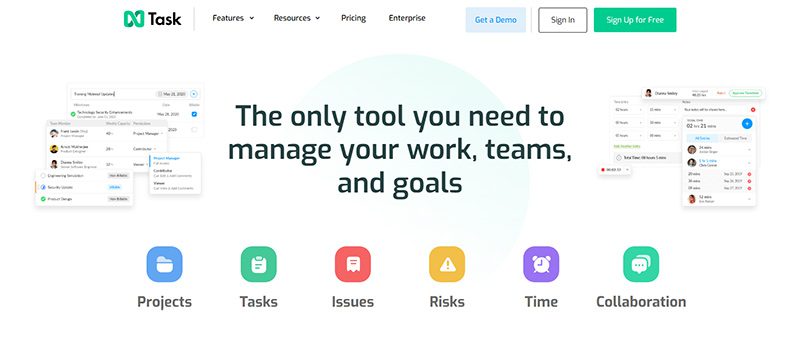
On the other hand, nTask is another reliable tool that helps you with all-around project tracking. Here, you get management software that helps set your team’s milestones, budgets, and to-do lists. It also comes with a built-in time-tracking tool to see the completion metrics of every project stage.
It’s hard to complete projects on time, so nTask sets a planned and actual due date. Finally, it’s a great option for companies that want to save a penny. Their entry-level plan starts at $4 a month.
6. Microsoft Planner
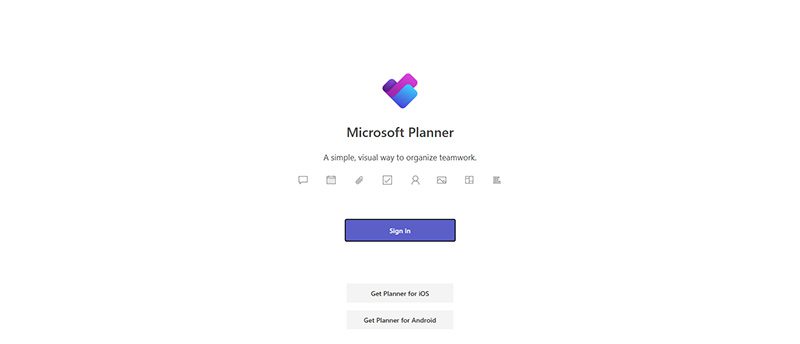
You might have a resource planning tool just sitting right under your nose. Microsoft Planner is Microsoft’s management tool. Like other items on the list, it provides a visual way to organize your resources. Apart from that, it also has built-in AI-powered analytics to help you get insights into your resources.
This is one of the best resource planning tools, free, but only if you already have an existing Microsoft 365 account.
7. Kantata

Next, Kantata has comprehensive tools to make your project management life easier. Aside from role-based and scenario planning, it also has resource forecasting, so you can check what resources you might need in the future.
This tool also works for capacity management. Plus, it integrates with dashboards like HubSpot, Jira, and G Suite.
8. Ganttic
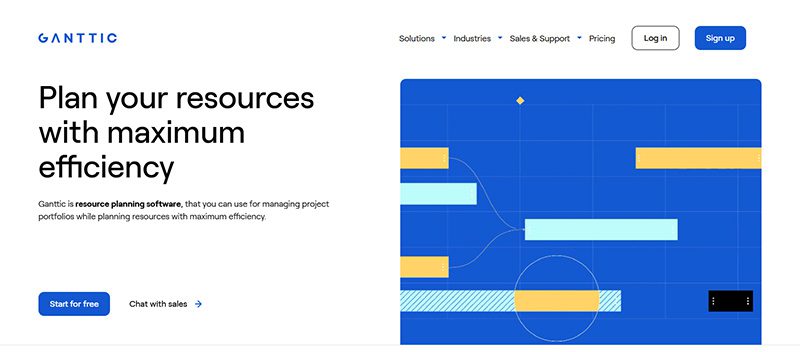
As you can probably tell already from the name, Ganttic is a software that offers visual Gantt charts. This system will help you check which resources are overused, which projects lack capacity, and who you can tap for extra work. The tool is also highly customizable and comes with filtered tags—color-code and group people so you’ll stay on top of your teams.
Plus, Ganttic integrates with your current work dashboards. Whether it’s Google, Outlook, or a custom integration, they can fit into most work suites. Ganttic starts at $25 a month per user.
9. Resource Guru

If you’re looking for a detailed resource analytics tool, make Resource Guru part of your team. This tool offers simple features that allow you to schedule your resources with a drag-and-drop system. But what sets this tool apart is its clash management feature that prevents you from overbooking resources.
Here, you can monitor your resource data and even pull key metrics, such as billable time, into the mix. This tool costs $5 per person per month.
10. Teamdeck
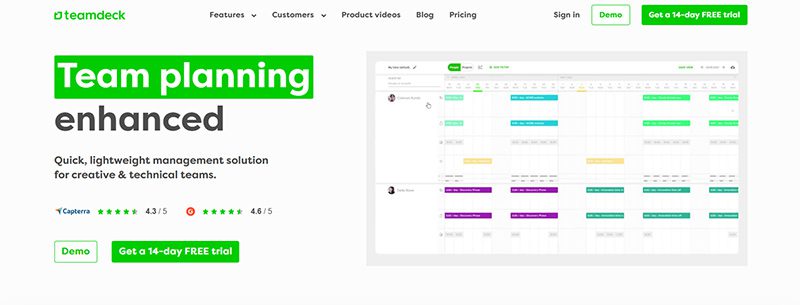
Looking for a comprehensive platform for HR managers? Don’t worry; we’ve also got Teamdeck. Along with being one of the best resource management tools, it’s also reliable for HR teams. Here, you get various features like scheduling, time tracking, and timesheets. You can also list down your team’s current and future workload.
But Teamdeck lets your staff request vacation days and even track their time on the platform. Oh, and did we mention that this tool also integrates with Google Calendar, Slack, Asana, and more? Their entry-level plan starts at $6 per user a month.
Resource management tools and techniques help you analyze your resources to make smart decisions to boost productivity.
The best way to find the right tool for your team is to look at the tool’s integrations, UI, customizations, and overall work features. If you find that one suits your team’s needs perfectly, then that’s your secret sauce.
Each tool has its unique features and benefits, and choosing the right one depends on your organization’s needs and budget. With the help of these resource planning tools, project managers can streamline their workflows, optimize resource utilization, and deliver projects on time and within budget.
Business
What’s the Best Graphic Design Service for Modern Website UI/UX?
Published
2 days agoon
November 19, 2025
Today’s modern website goes beyond having impressive aesthetics; it strategizes. These sites guide users, build trust, and convert prospects. If you want all these incorporated in your web design, here are five of the best graphic design services for website UI/UX designs you can choose to work with:
1. Penji

Offering unlimited graphic design services, Penji has a team of top-caliber designers specializing in a wide range of services. You can send requests for UI/UX design, infographics, custom illustrations, and more. Its turnaround times of 24 to 48 hours allow you to get designs when you need them. All these for a flat monthly subscription fee.
2. DesignBro

An online graphic design platform, DesignBro, connects businesses with talented design experts. It gives you two options to get UI/UX designs. You can choose from its talent pool and work directly with a designer of your choice. Or you can hold a contest and wait for designers to submit entries, then choose from them.
3. Kimp
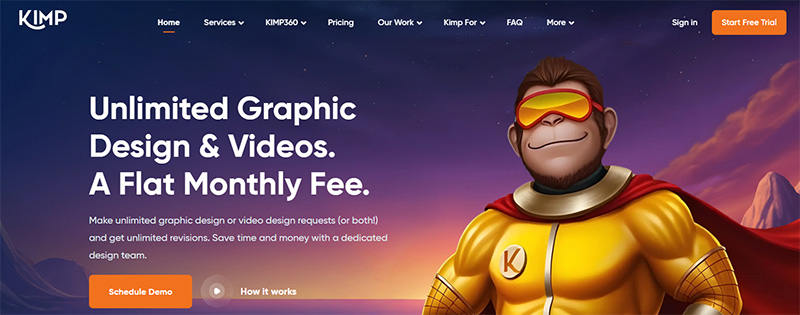
Another design-as-a-service platform like Penji, Kimp offers unlimited design requests and revisions for fixed monthly rates. Your projects will be handled by a dedicated design team, ensuring consistent quality. You can send requests for UI/UX designs, infographics, social media graphics, logos, and presentation designs, among others.
4. ManyPixels
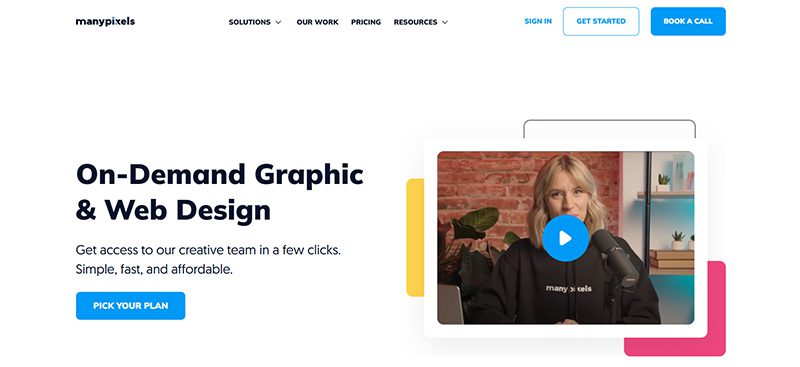
For businesses that need a constant supply of visual assets, ManyPixels is an excellent choice. It offers unlimited design requests for flat monthly subscription fees. It frees you from the hassles of hiring freelancers or the expensive costs of design agencies.
5. Fiverr Pro
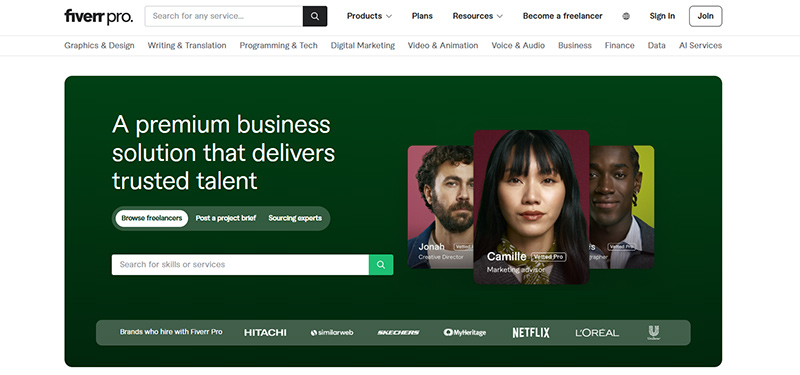
If you need a one-off UI/UX design, Fiverr Pro is an excellent option. It is one of the world’s top online marketplaces for freelancers. It lets you choose from a wide array of vetted designers from all over the world. This gives you the option to hire based on rates, location, experience, and expertise.

What’s the Best Graphic Design Service for Merchandise Design?

Top 10 Resource Planning Tools Every Business Should Know About

What’s the Best Graphic Design Service for App Interface Design

What’s the Best Graphic Design Service for Modern Website UI/UX?

The CHIPS Act: What It Means for the Semiconductor Industry

Meet the Speakers of Digital Cut 2026: Seth Godin, Ali Abdaal & Neil Patel

What’s the Best Graphic Design Service for Beauty & Wellness Brands

Our Top 10 Video Editing Tools for Smarter Content Production

How TikTok and Instagram Track You Using In-App Browsers

The CHIPS Act: What It Means for the Semiconductor Industry

10 Best AI Tools for Entrepreneurs

Top 10 Resource Planning Tools Every Business Should Know About

What are the Best Graphic Design Services for Fashion Brands?

What’s the Best Graphic Design Service for Education & eLearning?
Trending
- Business3 days ago
The CHIPS Act: What It Means for the Semiconductor Industry
- Business21 hours ago
Top 10 Resource Planning Tools Every Business Should Know About
- Uncategorized4 days ago
Meet the Speakers of Digital Cut 2026: Seth Godin, Ali Abdaal & Neil Patel
- Featured2 days ago
What’s the Best Graphic Design Service for App Interface Design
- Business2 days ago
What’s the Best Graphic Design Service for Modern Website UI/UX?
- Business12 hours ago
What’s the Best Graphic Design Service for Merchandise Design?



